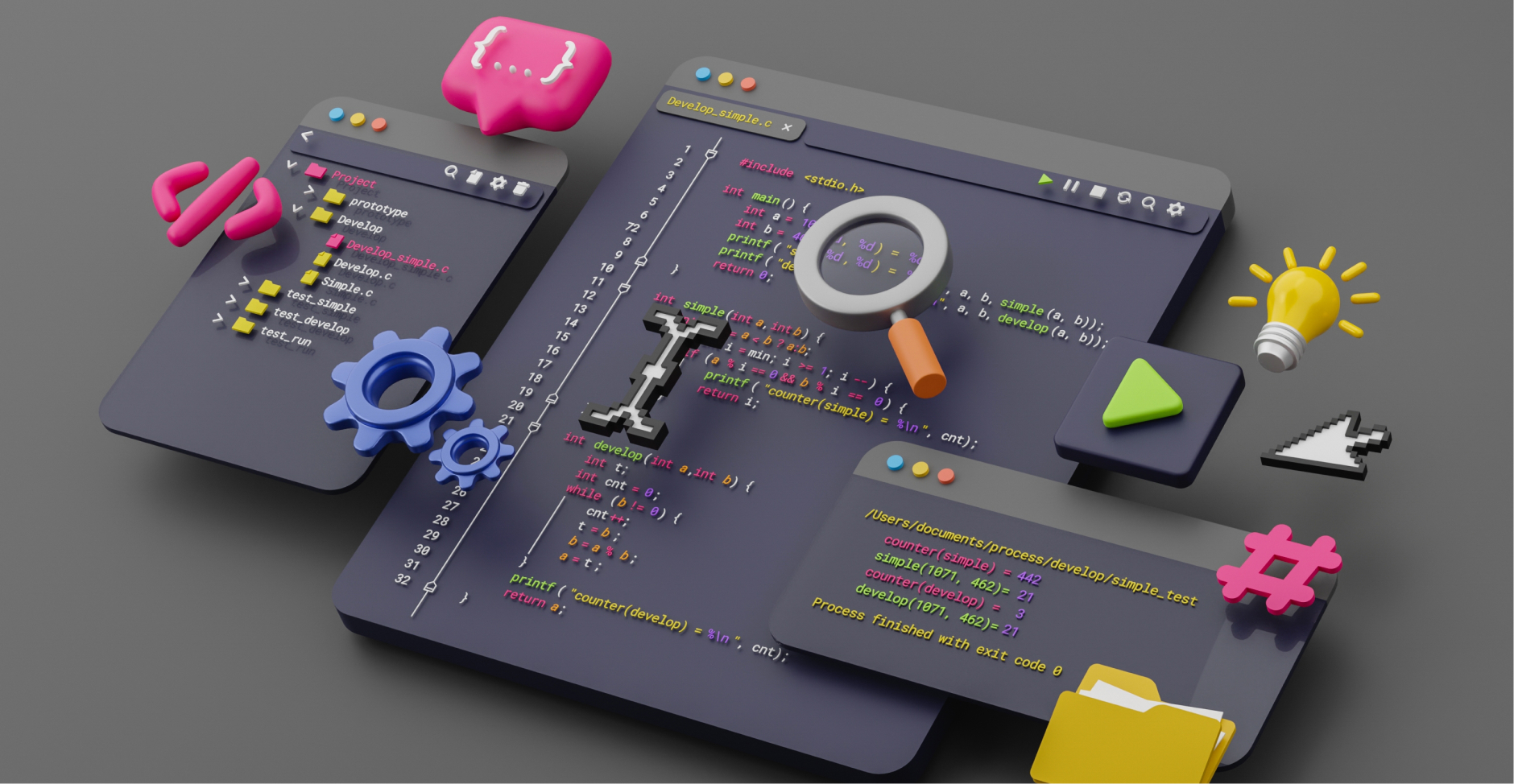
Site Search
How Software Product Engineering Accelerates Product Lifecycle Management

Table of contents

Let's talk
Reach out, we'd love to hear from you!
When it comes to product development, every second counts. Companies today are under constant pressure to launch innovative products faster while maintaining high quality. That’s where software product engineering comes in, making the whole process more streamlined and efficient.
If you’ve been in the tech space for a while, you’ve probably heard of product lifecycle management (PLM) and its crucial role in bringing products to life. But what if I told you that combining the power of software product engineering with PLM can radically speed up your entire process?
Let’s check out how software product engineering can take your product lifecycle management process to the next level, enhancing every stage from ideation to launch.
Why Efficient Product Lifecycle Management Is Necessary?
Building a product is like constructing a building. It’s not just about the materials or the design; it’s about ensuring everything from the foundation to the final touches aligns perfectly. In the case of software, product lifecycle management helps companies keep track of every detail, from initial development to maintenance. The goal? Make the journey as smooth and efficient as possible.
PLM covers everything from the initial concept and design to the testing, deployment, and post-launch maintenance. But the real question is, how can you accelerate this process without compromising quality?
That’s where software product engineering comes into play. By integrating engineering best practices and advanced tools, product teams can streamline workflows, enhance communication, and deliver higher-quality products in less time.
What Is Software Product Engineering?
Software product engineering is essentially the process of designing, developing, testing, and maintaining a software product. It’s a multi-disciplinary field that focuses not just on writing code but on building solutions that solve real-world problems. Most software product engineering companies focus on creating scalable, secure, and innovative products that align with business goals and user needs.
At its core, software product
Planning and Design: Setting clear goals and defining the product’s architecture.
Development: Writing clean, efficient code that meets the specifications.
Testing and QA: Ensuring the product is bug-free and user-friendly.
Deployment and Maintenance: Launching the product and providing ongoing updates and improvements.
By applying these stages within a product lifecycle management system, teams can ensure that every phase of the product’s journey is tracked, optimized, and aligned with strategic business goals.
How Software Product Engineering Enhances Project Lifecycle Management
Ever felt like your product’s journey from concept to launch is more of a marathon than a sprint? Here’s how product engineering enhances PLM:
Streamlining Development Phases
In traditional development processes, products often go through long cycles of planning, development, and testing before reaching the market. Software product engineering incorporates agile methodologies and continuous integration (CI), making it possible to build, test, and deploy products in shorter cycles.
For example, instead of waiting weeks for updates, agile sprints allow teams to make smaller, more frequent adjustments. This means feedback can be acted on almost immediately. In custom software development, agile is particularly useful because the development team can adjust quickly to the unique needs of the client.
Most software product engineering services companies emphasize the importance of DevOps practices, which help integrate development and operations. With automated deployment tools, teams can push updates to production without manual intervention. This significantly reduces errors and speeds up time-to-market, an essential component of a successful product lifecycle management process.
Improved Collaboration and Communication
Collaboration is at the heart of software product lifecycle management. Gone are the days of siloed departments working in isolation. Thanks to tools like Slack, Jira, and Confluence, teams from different departments, such as product, engineering, QA, and marketing, can communicate in real-time and stay aligned throughout the product development cycle.
These tools also help teams prioritize work based on real-time data, ensuring that any changes in market conditions or customer feedback are quickly reflected in the product. I’ve seen custom software development companies leverage these tools to enable seamless collaboration between designers, developers, and project managers, reducing misunderstandings and speeding up decision-making.
Automation of Routine Processes
Think about how much time gets wasted on repetitive tasks. Now, imagine if you could automate those tasks. Sounds like a dream, right? Well, it’s very much a reality in software engineering. Product lifecycle management tools often come with automation features that can handle everything from code testing to deployment.
Take continuous testing as an example: automated testing tools allow teams to test code every time it changes, catching bugs early in the development cycle and ensuring higher quality with less manual effort. These same tools can also monitor performance post-launch, alerting teams if any issues arise. This means a smoother product lifecycle and fewer surprises down the road.
Automation is a game-changer for software product engineering services. It reduces human error, saves time, and allows teams to focus on more complex, creative tasks that drive innovation.
Data-Driven Decision Making
Data is the dominator in software product lifecycle management. By collecting data at every stage, whether during development, testing or after launch, companies can make informed decisions on how to improve the product.
Analytics tools can monitor product usage in real time, providing feedback on which features are most popular or where users are facing issues. This feedback loop allows teams to make adjustments and optimize the product without waiting for a major update.
For example, a product lifecycle management system might integrate with a tool like Google Analytics, enabling product teams to track how customers interact with the software and identify areas for improvement. By leveraging this data, software product engineers can ensure that their products evolve in the right direction, meeting both user needs and business goals.
Scalability and Flexibility
Scalability is a key aspect of software product engineering. With modern software product engineering services, products are designed to be flexible and able to adapt to changing user needs and growing demand.
When your product starts to scale, you don’t want to deal with architectural bottlenecks that slow things down. Thankfully, today’s best practices in software engineering, like microservices and cloud-native development, make it easier to scale your product seamlessly.
Companies that implement software product lifecycle management tools benefit from systems that can handle increased load, integrate with new technologies, and scale as needed. For businesses in fast-moving industries, this adaptability is critical to staying ahead of the competition.
Benefits of Accelerated Product Lifecycle Management
Check out the benefits of streamlined product lifecycle management:
Faster Time-to-Market
Faster time-to-market is the number one benefit of using software product engineering in product lifecycle management. With faster development cycles, better collaboration, and automation of routine tasks, companies can get their products into the hands of users more quickly.
This speed doesn’t just mean launching the product sooner. It means being able to adapt and pivot quickly to meet market demands. By reducing development time, companies can release products faster, stay ahead of competitors, and capitalize on new opportunities.
Cost Efficiency
Everyone loves saving money, and software product engineering can help do just that. By eliminating unnecessary steps and automating manual processes, businesses can reduce the time and resources spent on development.
In the context of product lifecycle management systems, cost efficiency also comes from reduced error rates, fewer bugs, and less time spent fixing problems that could have been caught earlier in the process. This means that the money you spend is going toward delivering value rather than fixing mistakes.
Better Product Quality
Quality is one of the most important aspects of a product’s success, and software product engineering services are designed to ensure just that. Continuous testing, automated deployments, and regular updates mean that the final product is both stable and innovative.
By leveraging PLM tools, companies can maintain a high level of quality control throughout the lifecycle, catching issues early and reducing the likelihood of post-launch disasters.
Improved Customer Satisfaction
One of the ultimate goals of software product engineering is to deliver a product that meets and exceeds customer expectations. With faster iteration cycles and better testing, you can ensure that your product is always in top shape.
Furthermore, by leveraging customer feedback from PLM tools, companies can continuously enhance the product to better serve their audience. A well-executed product lifecycle management process leads to products that satisfy users, improving retention and loyalty.
Enhanced Innovation
With faster and more efficient development cycles, companies can innovate without waiting for months to roll out updates. Product teams are empowered to experiment, test new ideas, and make adjustments in real time. This iterative approach to product development leads to continuous improvement and, ultimately, better products.
Reduced Risk
Product development always comes with risk, but the more you can predict and mitigate issues, the less likely you are to encounter serious setbacks. With automated testing, real-time monitoring, and data-driven decision-making, companies can catch potential problems early in the process.
Software product engineering companies that incorporate PLM systems are able to better manage these risks, ensuring that their products are more stable and resilient when they hit the market.
Unlocking Efficiency in PLM with Unified Infotech’s Software Product Engineering Expertise
At Unified Infotech, we specialize in transforming how businesses approach Software Product Engineering to accelerate Product Lifecycle Management (PLM). Our expert team of developers and engineers utilizes cutting-edge tools and methodologies to streamline the product development process, ensuring faster time-to-market, enhanced product quality, and optimized resource utilization.
We understand that modern product lifecycles require agility and flexibility. By integrating agile development practices, automation, and advanced PLM tools, we help businesses move from ideation to product launch seamlessly. Whether it’s through continuous integration, robust testing frameworks, or iterative feedback loops, we ensure that every phase of the PLM process is efficient, scalable, and aligned with business goals.
Unified Infotech’s Software Product Engineering services provide a tailored approach, addressing the unique challenges of each project. Our solutions are designed to reduce errors, improve cross-functional collaboration, and provide real-time insights that enable faster decision-making. With our expertise, companies can innovate with confidence, optimize product performance, and achieve higher customer satisfaction, all while accelerating their PLM processes. Let us partner with you to bring your products to life with precision and speed.
Product Lifecycle Management and Software Product Engineering with a Software Development Company
Looking ahead, the combination of software product engineering and product lifecycle management systems will only continue to evolve. Emerging technologies like artificial intelligence, machine learning, and the Internet of Things will add even more layers of automation and intelligence to the product lifecycle.
By integrating modern software engineering practices into the PLM process, businesses can not only speed up product development but also innovate and meet customer needs faster than ever before.
In short, the synergy between software product engineering and product lifecycle management isn’t just beneficial but an absolute necessity.
Frequently Asked Questions (FAQs)
What is Software Product Engineering, and how does it relate to Product Lifecycle Management (PLM)?
Software Product Engineering involves the design, development, testing, and maintenance of software products. It’s a comprehensive approach that ensures products are built efficiently, with a focus on scalability, security, and performance. When integrated with Product Lifecycle Management (PLM), it accelerates the entire product development process by streamlining workflows, ensuring quality at every stage, and enhancing product evolution from concept to delivery.
In what ways can Software Product Engineering expedite the various phases of PLM?
Software Product Engineering speeds up PLM by incorporating agile methodologies, continuous integration, and automation tools. These enable rapid iteration, faster testing, and quicker deployment cycles. Automation of routine tasks reduces manual intervention, while data-driven decision-making helps in identifying issues early, allowing teams to adapt and iterate quickly. This accelerates every phase of PLM, from initial design to ongoing maintenance.
What are the key benefits of integrating Software Product Engineering into PLM processes?
The integration offers several key benefits:
Faster Time-to-Market – By using agile development and automation, companies can launch products quickly.
Higher Product Quality – Continuous testing and real-time feedback lead to fewer defects and more stable products.
Cost Efficiency – Reduced development time and lower error rates result in cost savings.Innovation – Faster iterations allow for more experimentation and continuous product improvements.
How does Software Product Engineering enhance collaboration among cross-functional teams within PLM?
Software Product Engineering fosters collaboration by using tools like Jira, Slack, and Confluence, which enable real-time communication between product managers, developers, QA engineers, and other stakeholders. These tools break down silos, allowing for better alignment and faster decision-making. Automated workflows and transparent project tracking ensure that all teams are working toward a common goal, improving overall coordination throughout the PLM process.
What challenges might organizations face when implementing Software Product Engineering to accelerate PLM, and how can they be addressed?
One challenge is resistance to change, especially when implementing agile methodologies or new automation tools. To overcome this, organizations can invest in training and change management to ensure smooth transitions. Another challenge is integrating legacy systems with modern engineering practices. This can be addressed by taking a phased approach to implementation, starting with smaller, less complex projects and gradually expanding the use of software product engineering practices. Finally, ensuring that cross-functional teams are aligned on goals and processes is crucial, which can be managed through clear communication and regular check-ins.


